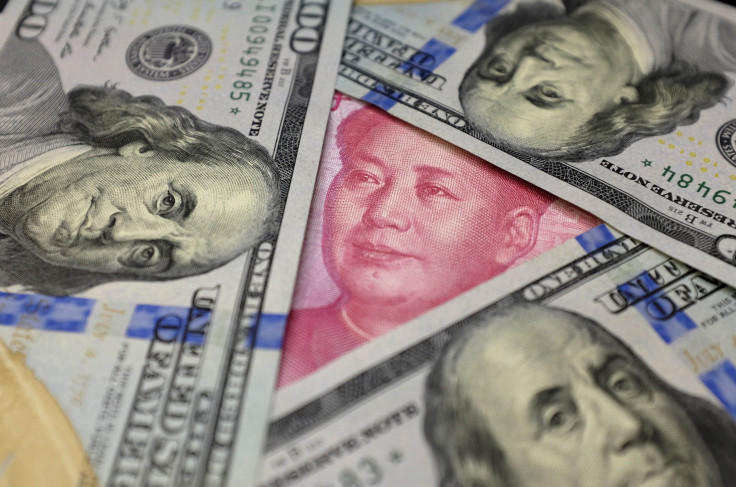China’s Forex Reserves Drop To Lowest Level Since 2011, But Central Bank Sticks To 2016 Growth Target

China’s foreign exchange reserves — the world’s largest — dropped to their lowest level since December 2011 in May, official data released Tuesday showed. Last month, the reserves, which had risen for two consecutive months in March and April, fell by $27.93 billion in May to $3.19 trillion.
The drop in forex reserves is likely due to the rise in the dollar, which briefly appreciated amid speculation about a rate rise by the U.S. Federal Reserve. The dollar index, which measures the U.S. currency against a basket of other major world currencies, strengthened 3 percent last month, exerting a downward pressure on the Chinese currency.
“Capital outflow pressures likely revived in May alongside the renminbi’s 1.6 percent depreciation against the U.S. dollar, though the scale of outflows should have been limited by the ongoing tightening of capital controls,” UBS economist Ning Zhang told the Wall Street Journal.
In 2015, China’s capital outflows stood at a staggering $1 trillion, while its forex reserves dropped by $513 billion to $3.33 trillion — marking the first annual drop since 1992. Earlier this year, the central bank stepped up controls to ease outflow pressures, before loosening some of the restrictions in February.
Despite some moderation in recent months, an estimated $25 billion left Chinese shores in April — the 25th consecutive month of net outflows from China.
“Movements in the dollar are likely to continue to play a key role in driving outflow pressures,” Julian Evans-Pritchard, a China economist at Capital Economics in Singapore, wrote in a note. “Depreciation expectations remain much more manageable.”
However, the weakness in the Chinese currency ensured that both imports and exports fared much better than expected in local currency terms. In dollar terms, though, exports dropped 4.1 percent in May — compared with 1.8 percent drop in April — while imports slid 0.4 percent — a drastic improvement over the previous month’s 10.9 percent contraction.
China’s trade balance stood at $50 billion in May, up from $45.56 billion in April.
“The worst time for Chinese exports has passed,” Harrison Hu, the chief greater China economist at Royal Bank of Scotland in Singapore, told Bloomberg. “The quantity of exports actually showed a subdued increase. The yuan also depreciated against a basket of currencies, which supports exports.”
In its mid-year work report released Wednesday, the People’s Bank of China stuck to its gross domestic product growth forecast for the full year, stating that it still expects the GDP to grow 6.8 percent in 2016 despite moderating expectations of export growth.
In the first quarter of the year, China’s economy grew 6.7 percent — the slowest pace in seven years.
“Since the beginning of this year, the global and domestic economic environment has experienced a number of changes,” the central bank reportedly said. “Reflecting these recent developments, we revised our China macroeconomic forecasts for 2016. Compared with our published forecasts in December last year, we maintain our baseline projection of 2016 real GDP growth at 6.8 percent.”
© Copyright IBTimes 2024. All rights reserved.












